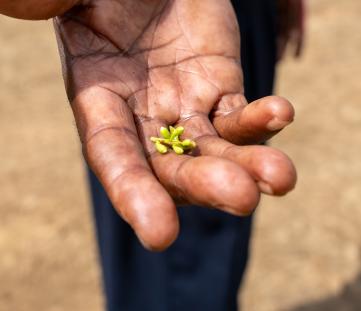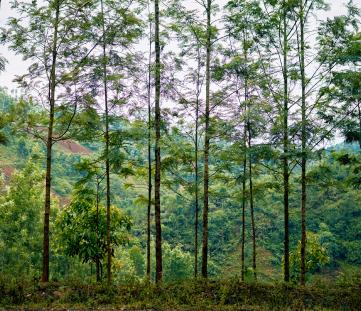ID: G9M-VG3
ID: G9M-VG3
Chaya
Cnidoscolus aconitifolius
Photo
Tanzania
11:50 - 21°C
My connections
My ID card
Who am I?
Date of birth
11/09/2022
Also known as
Chaya
Name
Chaya
Tree
Chaya
Where am I located?
Country
Tanzania
Place of birth
Arusha
Coordinates
3° 16′ 58.78″ S
36° 36′ 45.56″ E
/36.61265465,-3.28299414,0/500x333@2x?access_token=pk.eyJ1IjoidG9tbWFzb3NwZXJvbmkiLCJhIjoiY2tnOTE3eW12MDJqazMybXNzOWV1YjloOSJ9.wtGsuDU7XIKjcv2cq8CiXw&logo=false&attribution=false)
My Timeline
The important moments in your tree's life.
Seed
It all starts with a tiny seed, nice and warm in the soil.
Nursery
Your seedling is big enough to be welcomed into one of our nurseries, along with many others.
Planted
We’re here! Your tree has reached its new home: it’s been planted by a smallholder, who’ll take care of it for years to come.
Photo
Strike a pose! Now that it’s big enough, here’s a photo of your tree!
My Gallery
Nursery

Planted
/36.61265465,-3.28299414,0/500x333@2x?access_token=pk.eyJ1IjoidG9tbWFzb3NwZXJvbmkiLCJhIjoiY2tnOTE3eW12MDJqazMybXNzOWV1YjloOSJ9.wtGsuDU7XIKjcv2cq8CiXw&logo=false&attribution=false)
36° 36′ 45.56″ E
Photo

Curiosity about me
The important moments in your tree's life.
Let's start with introductions
"Cnidoscolus aconitifolius" is an evergreen, fast-growing shrub or small tree that can grow up to around 2–6 metres. The pedunculated leaves grow in an alternate arrangement, grouped at the ends of the branches, and are edible. In spring, the shrub blooms with white, wheel-shaped, five-toothed flowers in buds and produces a kind of milky sap. Due to its resemblance to spinach, the species is colloquially named tree spinach. People grow it for the many products they can make from it (like tea or juice) or even as a boundary hedge – because tree spinach effectively preserves the soil.
Meaning
Power
The leaves of Cnidoscolus aconitifolius are edible and contain a lot of proteins. Warning: they must always be cooked first, otherwise they could be poisonous.

How much CO2 I’ll absorb
My estimated CO2 absorption capacity is based on the first 10 years of my life*
Current absorption
- 20 kg
2022
0 kg
2032
-100 kg
* The tree will continue to absorb CO2 even after the tenth year. Therefore this is a prudent estimate.
How I am useful to local communities

Medicine
Its leaves, roots, bark and/or fruits are used in traditional medicine.

Consumption and sales
Its fruits, seeds and/or leaves are used as food in the farmers' families or are sold on local markets.

Fence
It provides protection for crops and shade for livestock.
My benefits
50%
Food Security
The trees will bear fruits, some that will be edible immediately and others that can become edible through processing, ensuring food resources over time.
50%
Economic development
The trees' fruits and the products derived from their transformation can be traded in local networks, offering income opportunities.
30%
CO₂ Absorption
During its life cycle, each tree will offset CO₂. The trees that you plant can offset your emissions.
40%
Environmental protection
The trees are planted in agroforestry systems that favor the virtuous interaction between the different species and their positive impact on the environment and on the land.